Despite all the anxiety and grim news, the stock market was able to retrace much of the losses suffered in the first quarter of the year. After bottoming out in late March with a roughly 40% decline, the broader stock market was able to move steadily higher throughout the entire second quarter. By the end of June, the S&P 500 was only off 8% for the year. This was actually the best quarter for stocks since 1987.
In many ways this seems counterintuitive in light of the data. The first half of 2020 saw a decade’s worth of employment gains wiped out. The unemployment rate peaked at 14.7% as over 20 million jobs were lost. The consumer, who had been the engine for economic growth, was shut down causing spending and confidence to plunge in the second quarter. First quarter GDP fell 4.8% and second quarter GDP is expected to decline by an astounding 50.0%. This will mark the first recession since 2008/2009.
So why the strong quarter? The answer is that, by all indications, the consumer wants to come back and COVID-19 isn’t proving to be as dangerous as originally predicted. While the current economic data is quite dismal, the stock market is forward-looking. Investors are hoping this lockdown will ease soon, there’s enough government bailout money to keep small businesses afloat, and a medical solution is at hand. The combination of these three things with the fact that there is nowhere else to make money is driving capital into the stock market.
The faith in a quick recovery is not misplaced. To put it in medical terms, some crashes are due to a chronic problem in the economy. The financial crisis is a good example. In that case, the financial system had underlying problems that needed to be understood and reformed. Those can take years to fix. The other type of crashes are the result of an acute problem; an event that significantly, yet temporarily, impacts the economy. Once over, the economy gets back on track. 9-11 is a good example of this. COVID-19 is too.
It’s hard not to get rattled when stocks experience the kind of decline we saw this year. Afterall, the S&P 500 dropped by over a third in just four weeks. In truth, the stock market is just a proxy for the economic health of the country. As things get better, so too will it. It’s just a matter of time.
So we think the stock market will be fine, but the real long-term story is in the bond market. The government’s monetary response to the pandemic has pushed interest rates down to unfathomable levels. The yield on the benchmark ten-year treasury bond has been firmly planted below one percent since this started. Prior to the economic shutdown, the yield on the ten-year was hovering around two percent. It is now barely a quarter of that.
In response to shutting down the economy, the Federal Reserve opened up its playbook for the financial crisis. They cut the Fed Funds rate target to near zero and instituted a new round of quantitative easing. QE, if you’ll remember, is means by which they inject cash into the economy and push down longer-term interest rates by purchasing bonds in the secondary market. This is the same market investors trade in. So in essence, the Fed is bidding on the same bonds you and I are. Prices move up as a result and yield move down.
This is no small thing. This tactic was first implemented during the financial crisis. At that time, they purchased roughly three trillion dollars of bonds over the course of three years. By the end, they owned approximately 4.5 trillion dollars in bonds. These were all treasuries and mortgage-backed bonds. The existence of this portfolio over the years has been the primary reason interest rates haven’t normalized since the financial crisis. It wasn’t until 2018 that they were able to make a dent in reducing the size of their holding and rates began to edge higher.
In the wake of the shutdown, they have now added three trillion more dollars in bonds to their holdings and expanded the types of bonds they hold. This portfolio topped seven trillion dollars in June. There’s no mystery why bond yields are so low. All of this begs the question of how retirees are expected make income. This is the real dilemma. How can the Fed unwind trillions of dollars in assets without shrinking the economy and how will the country afford the increased costs of its debt if it lets rates normalize, now trillions higher from the bailout money? It’s quite a predicament with retirees on the other side of the equation.




